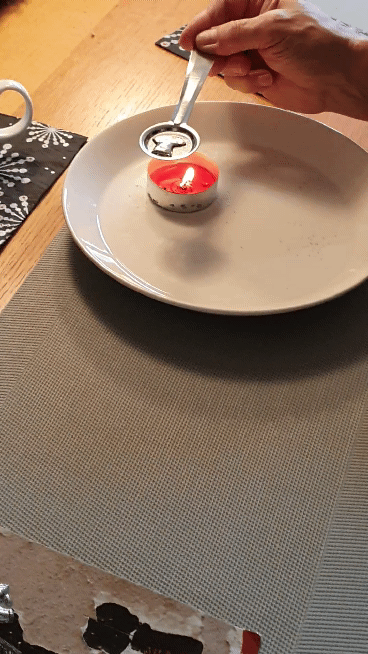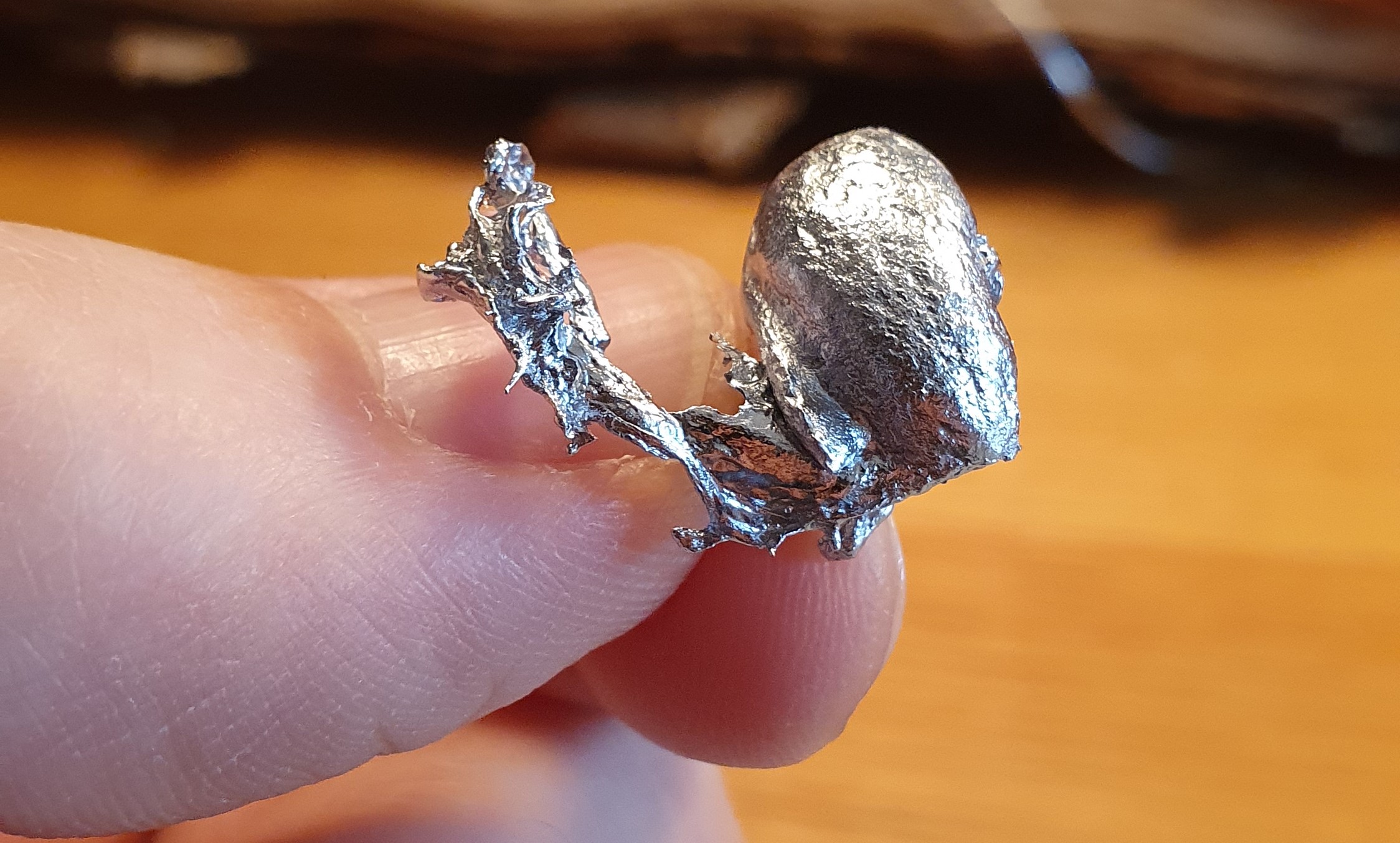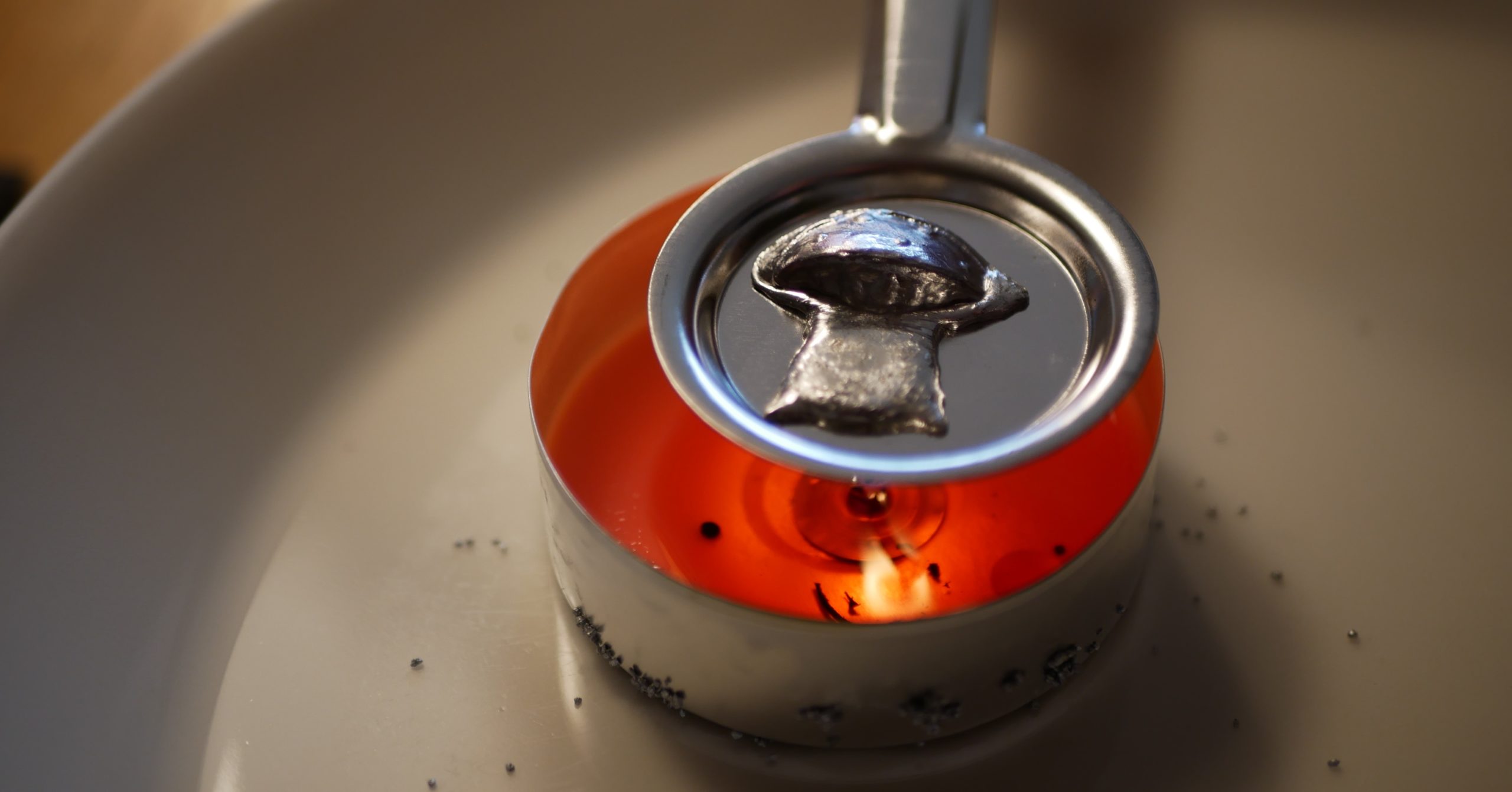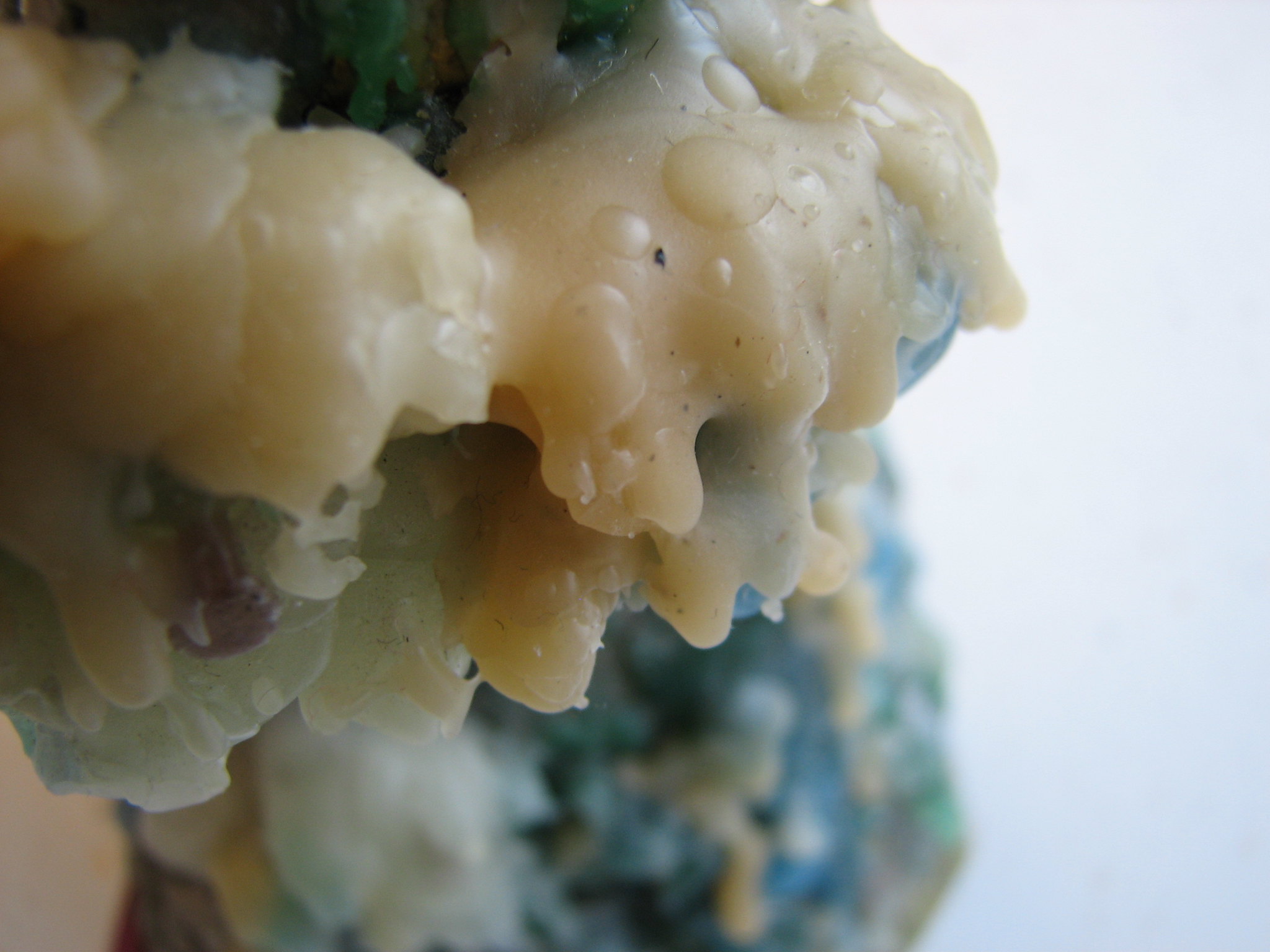Bleigießen – Will this German Tradition Tell Your Future? Posted by Sten on Jan 11, 2021 in Culture, Holidays, Language, Traditions
Happy new year, everyone! Some days ago, we looked at some German NYE traditions. Today, I want to talk about a tradition that came to an end, but we could still do this year – Bleigießen (“lead pouring”). What is it, how do you do it and where did it come from?
Drop it like it’s hot (well, it actually is)
Let’s talk about how it works! So – you buy a kit of Bleigießen. This includes a small metal pan or spoon and several small shapes. The package normally also includes the meaning of some shapes. Here’s what you do.
Get a small Kerze (candle). Choose one of the shapes (this one doesn’t really matter), and place it on the pan. Then hold the pan over the Kerze, and wait. Make sure that the pan isn’t in the flame! After a few minutes, you will see that the shape starts melting. Wait until the entire shape has molten, and then carefully bring the hot pan with the liquid lead over a large bowl of water, and then turn the pan around, so that all the lead drops into the water. It’s normal that there are some lead remains left in the pan.
The lead quickly cools down and hardens in the water, morphing into new, interesting shapes. It’s safe to the touch again. Take out the new shape, and ask yourself: what does this look like? Make a suggestion, and then check the back of the kit for an explanation of the shape. Often, the amount of different shapes and Bedeutungen (meanings) leave a lot to be desired on these packages. You can find many more Bedeutungen, with more extensive explanations, on https://www.bleigiessen.de.
What do the shapes from Bleigießen look like?
Here’s how my Blei shaped this year. It looks a bit like a Herz (heart), perhaps a Sprössling (sprout) or, perhaps, an Eichel (acorn). The Herz, of course, predicts lots of love. I couldn’t find a meaning for Sprössling. On the other hand, Eichel says the following:
Was du in der nächsten Zeit beginnst, wird Bestand haben. Die Zeiten des Ex und Hopp ist vorbei, du strebst Dauerhaftigkeit an, vor allem in deiner Beziehung.
(What you begin in the near future will endure. The days of the throwaway mentality are over, you strive for longevity, especially in your relationship.)
That’s pretty cool!
Does it really look like an acorn? Well, perhaps not. Or does it? My family and I saw it as an acorn, so that’s what we chose!
But, we should really not have done it…
Health Concerns – Bleigießen is gesundheitsschädlich!
In 2018, the sale of Bleigießsets (lead pouring sets) was verboten (prohibited) in 2018 due to a new EU Regulation. This new law says that products containing Blei cannot contain more than 0.3 percent of the metal. Bleigießen, however, regularly contains above 70 percent Blei!
The reason for this strict limit is that Blei is an Umweltschadstoff (environmentally hazardous material). When heating Blei, Bleioxide (lead oxides) form in the air, which can get into the body through your airways. Especially children should avoid it, even just touching it, as Blei can have severe consequences, like impairing the development of their intelligence.
Furthermore, because it is such a hazardous material, it also needs to be disposed of properly, in the Sondermüll (special waste).
Good alternatives to Bleigießen: Zinn and Wachs
So, no more Bleigießen. So what do we do instead? Well, you can go with Zinn (tin) or Wachs (wax), which both behave similarly when dropped in cold water. Wachsgießen and Zinngießen are already accepted alternatives, and especially Zinnsets (tin sets) are readily available now. There is another nice side to this: Zinn has a lower melting temperature than Blei, so you don’t have to wait as long!
Here are some instructions on how to get started with Wachsgießen. The good thing is that you don’t need to go out and buy a set, you can make one yourself with old Wachs you have lying around, like Kerzen!
Have you practiced Bleigießen before? Would you like to try one of the alternatives at some point? Let me know in the comments below!

Build vocabulary, practice pronunciation, and more with Transparent Language Online. Available anytime, anywhere, on any device.








Comments:
KipPhoenix:
There’s a guy on YouTube who does something similar. He pours molten aluminum into “fire ant” hills to exterminate them, then lets it cool and digs it out. The tunnel patterns the ants make are complex and quite beautiful. Too bad the ants are dangerous and need to be eradicated.